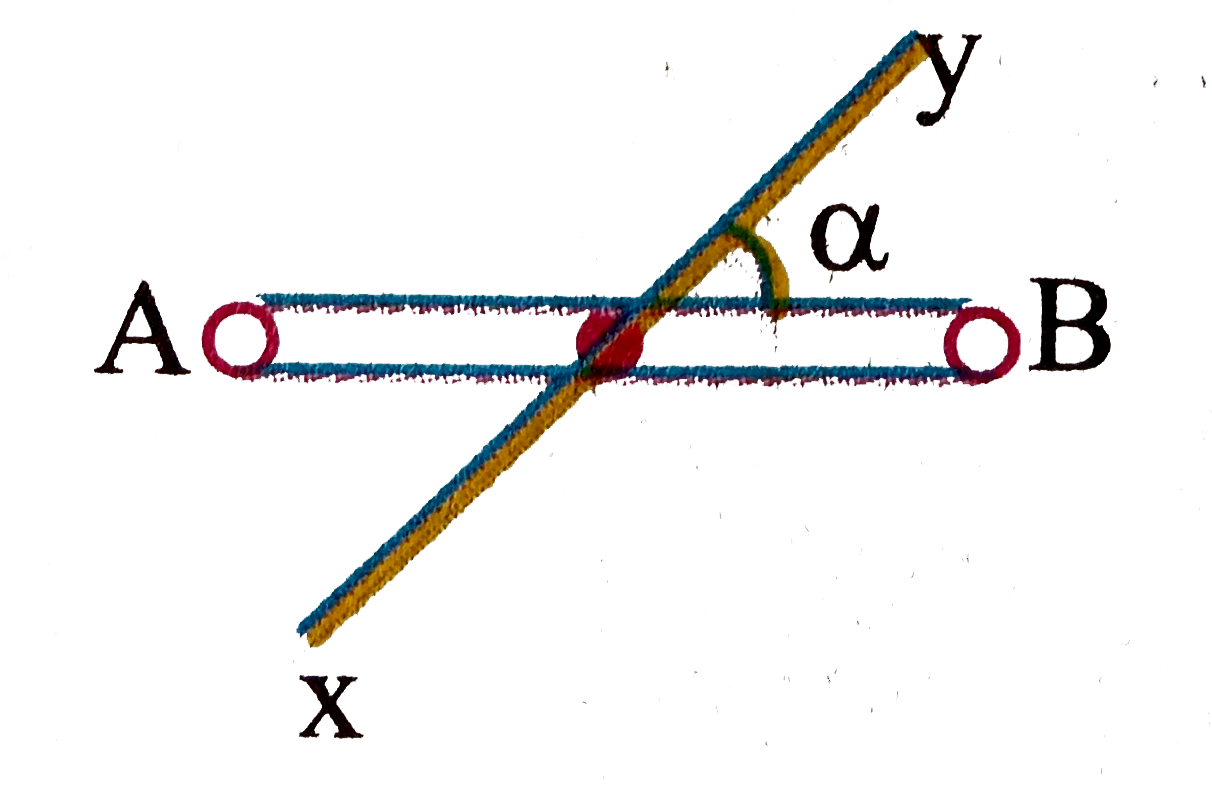A rod of length L is made of a uniform length L/2 of mass M1 and a uniform length L/2 of mass M2,
The M.I of rod about an axis passing through the geometrical center and ⊥ar to length
13(M1+M2)L2
112(M1+M2)L2
16(M1+M2)L2
14(M1+M2)L2
To find the moment of inertia (M.I) of a rod composed of two different masses about an axis passing through its geometrical center and perpendicular to its length, we can follow these steps:
1. Identify the Lengths and Masses:
- The total length of the rod is L.
- The rod is divided into two equal halves, each of length L2.
- The mass of the first half is M1 and the mass of the second half is M2.
2. Moment of Inertia Formula:
- The moment of inertia I of a rod about an axis perpendicular to its length and passing through its center is given by the formula:
I=112mL2
- Here, m is the mass of the rod and L is its length.
3. Calculate the Moment of Inertia for Each Half:
- For the first half (length L2, mass M1):
I1=112M1(L2)2=112M1L24=M1L248
- For the second half (length L2, mass M2):
I2=112M2(L2)2=112M2L24=M2L248
4. Total Moment of Inertia:
- Since the two halves are combined, the total moment of inertia I of the entire rod is the sum of the moments of inertia of both halves:
I=I1+I2=M1L248+M2L248
- Simplifying this gives:
I=(M1+M2)L248
5. Final Result:
- Therefore, the moment of inertia of the rod about an axis passing through the geometrical center and perpendicular to its length is:
I=(M1+M2)L248
- The total length of the rod is L.
- The rod is divided into two equal halves, each of length L2.
- The mass of the first half is M1 and the mass of the second half is M2.
- The moment of inertia I of a rod about an axis perpendicular to its length and passing through its center is given by the formula:
I=112mL2
- Here, m is the mass of the rod and L is its length.
- For the first half (length L2, mass M1):
I1=112M1(L2)2=112M1L24=M1L248
I2=112M2(L2)2=112M2L24=M2L248
- Since the two halves are combined, the total moment of inertia I of the entire rod is the sum of the moments of inertia of both halves:
I=I1+I2=M1L248+M2L248
- Simplifying this gives:
I=(M1+M2)L248
- Therefore, the moment of inertia of the rod about an axis passing through the geometrical center and perpendicular to its length is:
I=(M1+M2)L248
Topper's Solved these Questions
Similar Questions
A rod of mass M, length L is bent in the form of hexagon. Then MOI about axis passing through geometric centre and perpendicular to plane of body will be
View SolutionThree thin, uniform, indentical rods each or mass M and length L are joined as shown. Find the M.I. about an axis passing through O and perpendicular to the plane.
View Solution
Knowledge Check
- Question 1 - Select One
A rod of length L is composed of a uniform length 1/2 L of wood mass is mw and a uniform length 1/2 L of brass whose mass is mb. The moment of inertia I of the rod about an axis perpendicular to the rod and through its centre is equal to
A(mw+mb)L2/12B(mw+mb)L2/6C(mw+mb)L2/3D(mw+mb)L2/2 - Question 2 - Select One
Moment of inertia of a uniform rod of length L and mass M, about an axis passing through L/4 from one end and perpendicular to its length is
A736ML2B748ML2C1148ML2DML212 - Question 3 - Select One
Moment of inertia of a uniform rod of length L and mass M , about an axis pasing through L/4 from one end and perpendicular to its length is
A736ML2B748ML2C1148ML2DML212
find the radius of gyration of a rod of mass m and length 2l about an axis passing through one of its eneds and perpendicular to its length.
View SolutionThe M.I. of thin uniform rod of mass 'M' and length 'l' about an axis passing through its centre and perpendicular to its length is
View SolutionConsider a thin uniform rod having length 'L' and mass 'M'. Its moment of inertia about an axis passing through mid-point between centre point and one end and perpendicular to its length is
View SolutionThe moment of inertia of a uniform rod of length 2l and mass m about an axis xy passing through its centre and inclined at an angle α is
 View Solution
View SolutionMoment of inertia of a rod of mass M and length L about an axis passing through a point midway between centre and end is
View Solution

